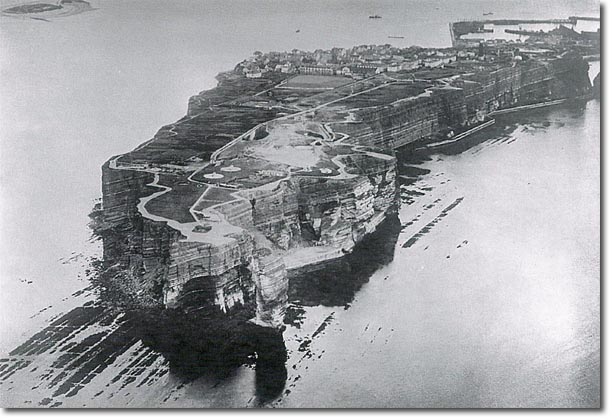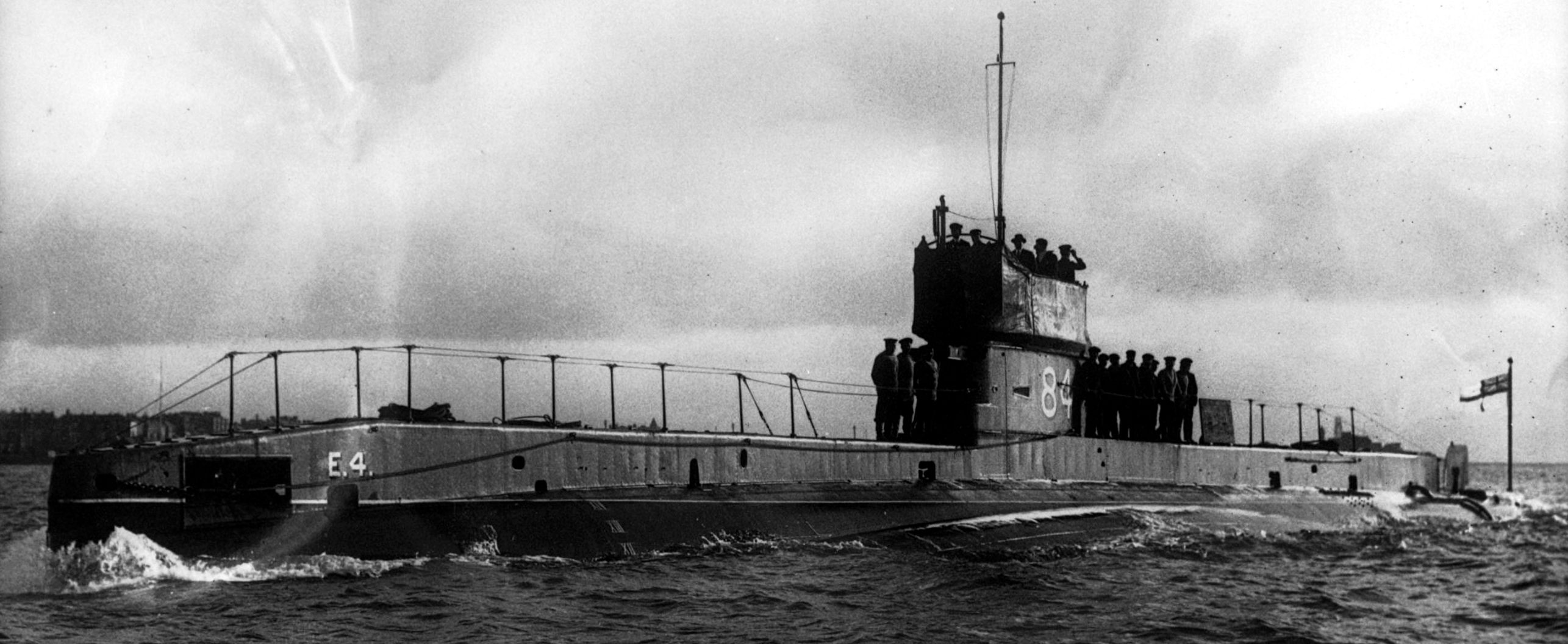The War Illustrated, 26th September 1914
Caption reads - "One incident in the naval action off Heligoland on August 28th reads more like a Jules Verne romance than cold fact. The Defender, having sunk an enemy, lowered a whaler to pick up her swimming survivors. An enemy's cruiser came up and chased away the Defender, who was forced to abandon her whaler. Imagine the sailors feelings, alone in an open boat twenty-five miles from the nearest land, and that land an enemy's fortress with nothing but fog and foes around them! Suddenly, a swirl alongside, and up popped submarine E4, which opened its conning-tower, took them all aboard, dived, and carried them 200 miles home to Britain"Part of the E4's fame is that it carried out the first major rescue by a submarine. I assume the incident shown is that rescue, the picture the writer paints is dramatic and combined with the cutaway by the artist, fascinating. The "enemy fortress with nothing but fog and foes"
 |
| "German Fortification of Heligoland circa 1916" from The British Empire site |
The task for E4 in this battle was to attack retreating or reinforcing German ships. As mentioned in the captioned drawing HMS Defender was attempting to rescue British sailors from the water but the light cruiser SMS Stettin appeared and opened fire making Defender retreat, however E4 had observed the action and launched a torpedo at Stettin, which missed. Stettin then attempted to ram the submarine which promptly dived to escape. When E4 eventually resurfaced the battle had moved on and she went to rescue the British crewmen still afloat in small boats (also containing German sailors). The Germans were left behind with a compass and directions to the mainland as the submarine was too small to take them all.
Built by Vickers at my local shipyard, Barrow in Furness, and launched in 1912 the E4 may have been lucky for the rescued seamen and lucky in battle but ironically its own disaster took place when least expected. Participating in an anti-submarine exercise in the North Sea in 1916 it collided with another submarine of the same class, the E41, took in water, and sank with all the crew (30). (The Submariners Association Roll of Honour list here). The E4 was raised, repaired and recommissioned then after the war sold in 1922 to the Upnor Shipbreaking Company in Kent.
Addendum:
For an excellent illustrated history of the Battle of Heligoland Bight see the British Battles website which also mentions E4's participation thus : "British submarine HMS E4, one of the vessels from 8th ‘Oversea’ Submarine Flotilla, based in Harwich, that routinely patrolled in the Heligoland Bight, and that acted as ‘bait’ in the Heligoland operation on 28th August 1914. E4 was commanded by Lieutenant Commander Leir . She rescued the crew from HMS Dolphin’s whaler"






No comments:
Post a Comment